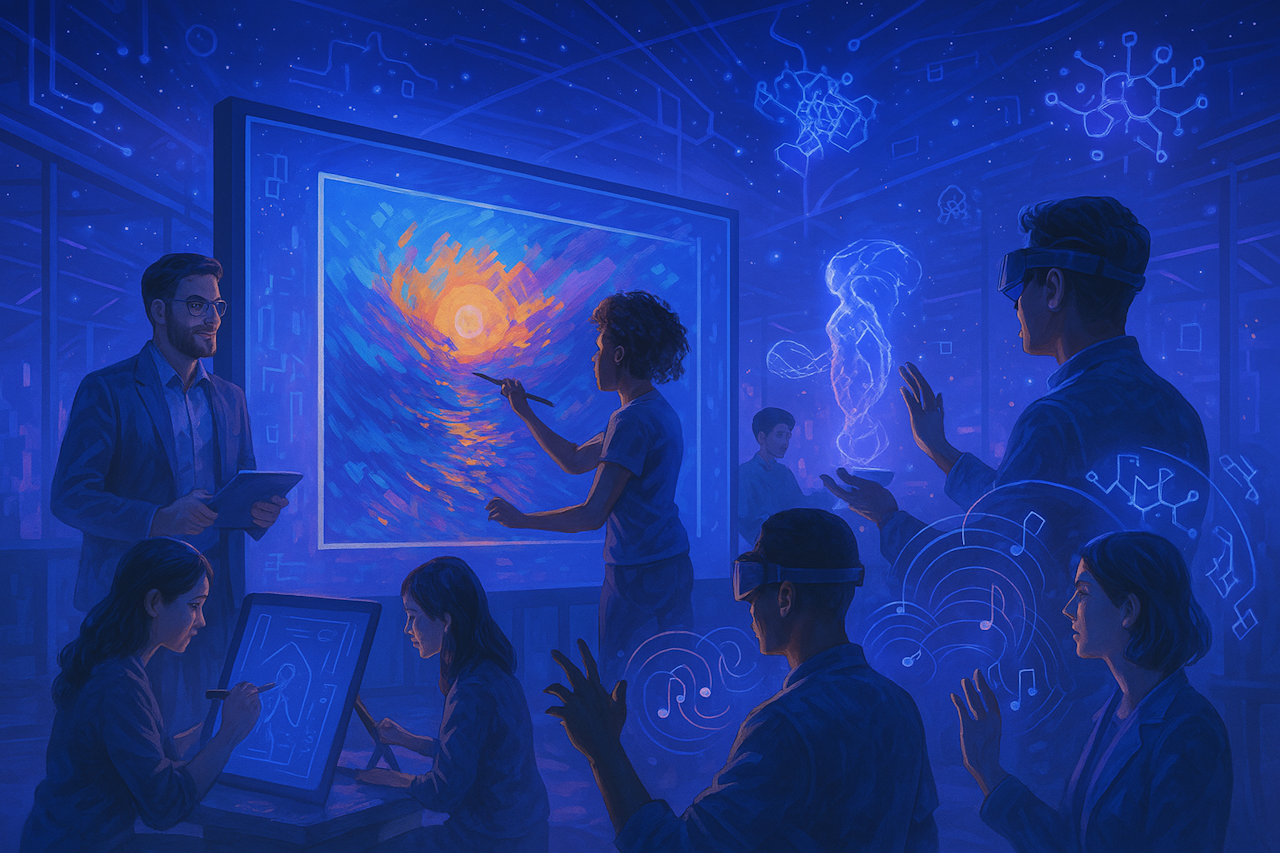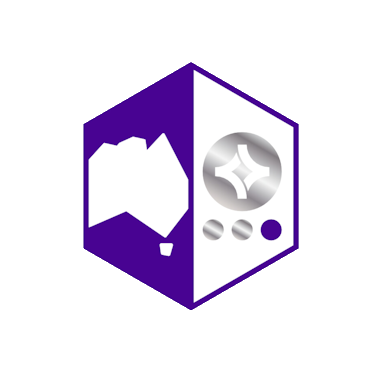It’s an interesting time for both art and technology, and the modern era boldly proclaims that every individual is innately gifted with creative potential. As technology interlaces with everyday life, creativity is no longer the exclusive domain of a select few; today, it is a universal language bolstered by innovative tech and digital artistry. Today, this creative renaissance is reshaping industries and redefining art forms.
From the gilded halls of classical art to contemporary digital canvases, traditional creative boundaries are dissolving. This revolution, epitomised by trends in democratising ingenuity (https://www.forbes.com/councils/forbestechcouncil/2024/04/09/democratized-creativity-the-evolution-and-impact-of-ai/), symbolises the evolving intersection between human ingenuity and modern technology—a renaissance where software meets soulful expression and algorithms augment imagination.
The Philosophy Behind “We Are All Creators”
A groundbreaking research paper lays the foundational claim that creative potential is inherent in every individual. The study, which deftly merges academic insight with practical applications, argues that creativity is not confined to a predetermined elite but is a biological and social phenomenon waiting to be nurtured. This idea, presented in “We Are All Creators” (https://arxiv.org/html/2504.07936v1), invites us to reassess our understanding of artistic expression in a technologically advanced society.
Historically, creative thought was often shrouded in mystique and reserved for the ‘chosen’ few. Today, academic exploration and empirical evidence progressively dismantle these preconceptions, democratising creativity and encouraging the use of AI-powered tools as instruments of personal expression.
Latest Trends in Creative Technology
The digital age has ushered in a transformative wave of creative AI that bridges ferocious innovation with accessible usability. Advanced applications empower users—ranging from amateur enthusiasts to seasoned professionals—to harness technology in crafting compelling digital art and innovative design concepts. Such technologies epitomise the ethos of democratising creativity, where barriers dissolve and artistic tools are available at the click of a button.
Simultaneously, interdisciplinary collaboration is taking centre stage as art and technology converge. Revolutionary platforms and intuitive design tools enable a melding of classical techniques with digital innovation, forming unique art forms that challenge conventional boundaries and fuel a creative revolution guided by both human touch and machine precision.
Pioneers and Market Leaders
In this epoch of digital creativity, major technology companies and nimble startups alike champion accessible creative tools. Established tech conglomerates invest in AI that transforms simple sparks of inspiration into blazing digital masterpieces, while visionary startups iterate rapidly with creative software that reshapes our understanding of art.
Academic institutions and research organisations also play a pivotal role, providing rigorous theoretical frameworks that validate these innovative approaches. Strategic partnerships between industry giants and creative communities accelerate advancement, ensuring that technological progress benefits every facet of creative endeavour—from digital art to design and beyond.
Noteworthy News and Recent Developments
Emerging product launches and fresh industry collaborations continually redefine what is possible in creative AI. Novel tools are not only fostering a surge in AI art but also stimulating debates regarding the ethical implications of artificial creativity, as well as the balance between human and machine-generated art. These developments underscore the pivotal role of innovative technology in bridging creativity with practicality and reshaping market dynamics.
Experts are increasingly vocal about both the promise and pitfalls of this paradigm shift. Celebratory narratives highlight the boundless opportunities for creative expression, while cautionary perspectives remind us of the essential need for ethical guidelines to helm this new age of technology-driven art.
Benefits for Diverse Audiences and Practical Guidance
For creative professionals, the current landscape offers an extensive array of AI tools that elevate design, art, and musical composition. Integrating these technologies helps overcome creative blocks and augments traditional techniques, leading to more dynamic and innovative outcomes in the arts. This shift is emblematic of a broader trend towards making creativity universally accessible.
Educators and students alike are empowered by creative platforms that not only foster technological literacy but encourage artistic flair. For entrepreneurs, leveraging these advancements can foster innovative business models and dynamic market strategies that place them at the forefront of a rapidly evolving creative industry, transforming challenges into opportunities.
A Concluding Ballad of Innovation and Imagination
From the allegorical dawn of creative expression to the digital revolutions of today, the narrative is clear: creativity is a universal trait destined to blossom when paired with the right technological tools. The journey from exclusivity to universality is both remarkable and exciting, heralding an era where technological innovation meets timeless creative spirit.
As this creative rebirth reaches its crescendo, the call to action is unmistakable—embrace innovative tools, engage with critical research such as “We Are All Creators” (https://arxiv.org/html/2504.07936v1), and join the movement that is redefining artistic expression. In the interplay between human ingenuity and digital innovation, the future of creativity is boundless, inviting everyone to become a creator in their own right.
In Other News…
🧑💼 Workplace & Productivity
EY Launches 30 AI Tools to Combat Burnout Ernst & Young has introduced 30 AI tools, including its flagship EYQ platform, across its global audit and consulting operations. This $1 billion investment aims to enhance efficiency and reduce staff burnout by automating administrative tasks, allowing auditors to focus more on risk assessment. The tools also support emerging demands in climate reporting as new regulatory deadlines approach. The Australian
AI Enhances Performance Reviews AI is transforming self-appraisals and performance reviews by making them more objective and inclusive. Studies indicate that AI-assisted evaluations help employees articulate achievements more clearly and mitigate biases, particularly benefiting women and underrepresented groups. Microsoft reports that 75% of global knowledge workers use AI, and 89% of Oracle employees favored AI-assisted reviews when implemented in 2023. Business Insider
🎨 Culture & Copyright
Getty Images Criticises UK AI Copyright Reforms Mark Getty, chairman of Getty Images, has criticised UK government plans to revise copyright laws to accommodate AI development. He argues that allowing AI companies to use copyrighted material without permission undermines the value of human-created content and could damage the UK’s copyright reputation. TheTimes.co.uk
AI Recreates Lost ‘Doctor Who’ Episodes Ian Levine, a 71-year-old “Doctor Who” superfan, has spent over £100,000 to recreate 97 lost episodes of the classic TV series using AI technology. Motivated by health issues, Levine hired AI designers to recreate the episodes using production stills, notes, and surviving audio, fulfilling his dream of watching the complete series. New York Post
💬 AI in Daily Life
Concerns Over AI in Online Dating The increasing use of AI, particularly ChatGPT, in crafting messages on dating apps is raising concerns about authenticity in online interactions. A Norton study reveals that 71% of users would consider using AI assistance, but critics argue this trend undermines genuine human connection and emotional intimacy. TheTimes.co.uk
🧬 Science & Innovation
MIT Develops Method to Protect AI Training Data MIT researchers have introduced a new method that efficiently safeguards sensitive AI training data. This approach maintains an AI model’s accuracy while ensuring attackers can’t extract secret information, addressing privacy concerns in AI development. MIT News


